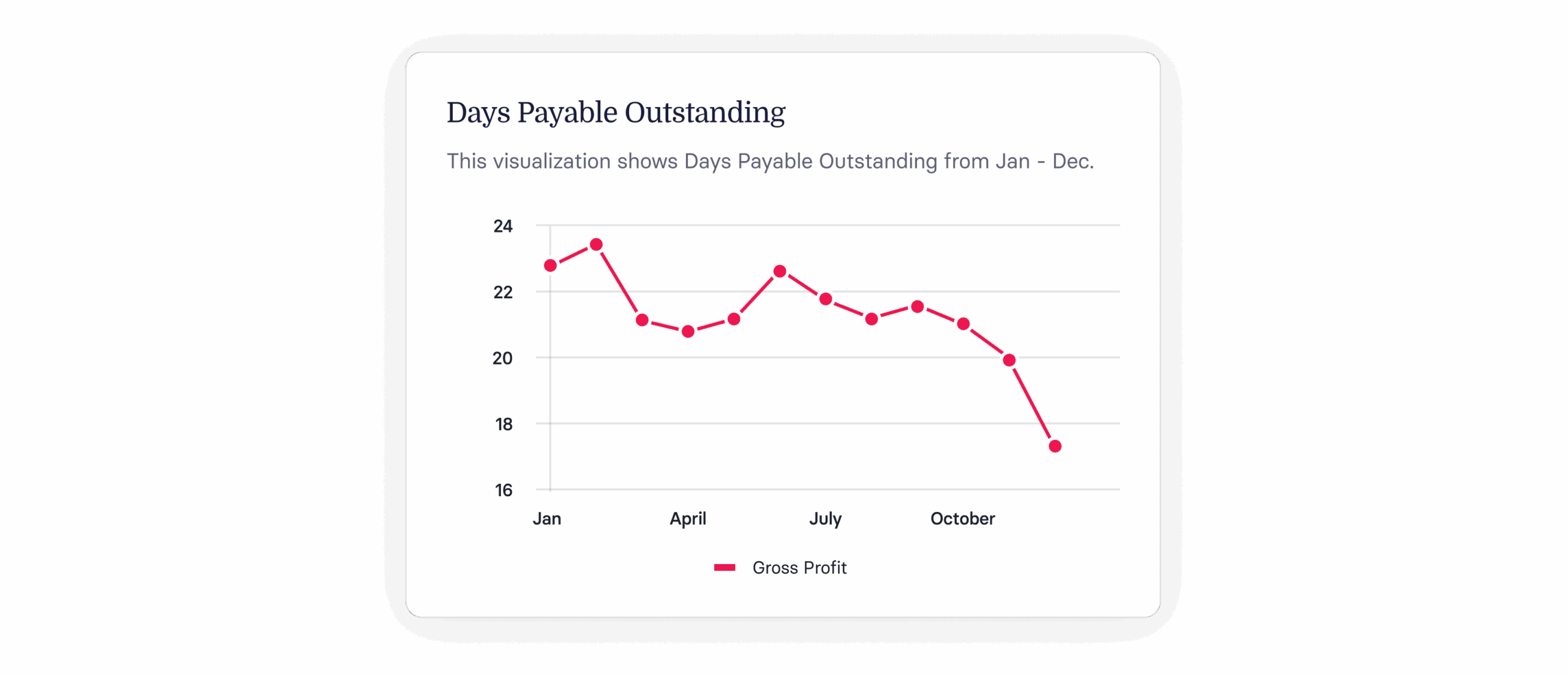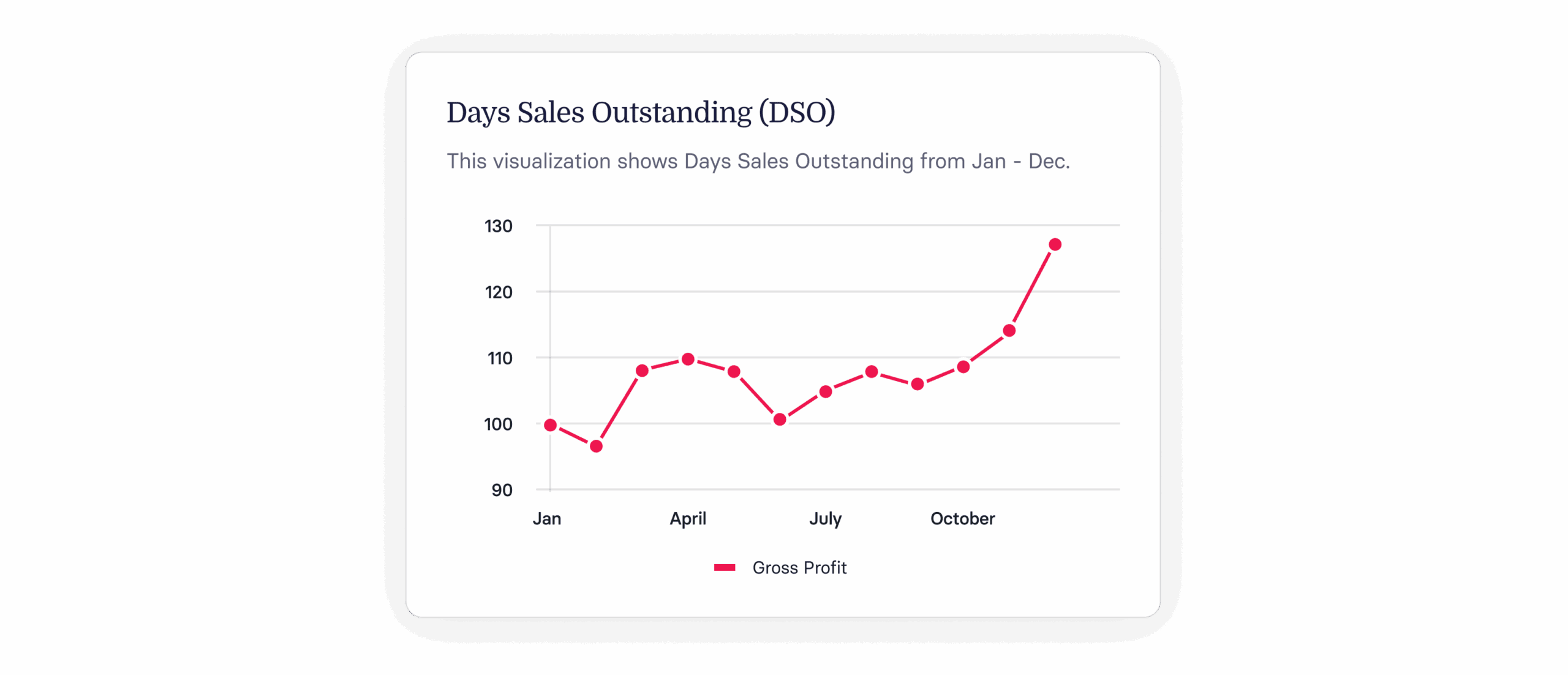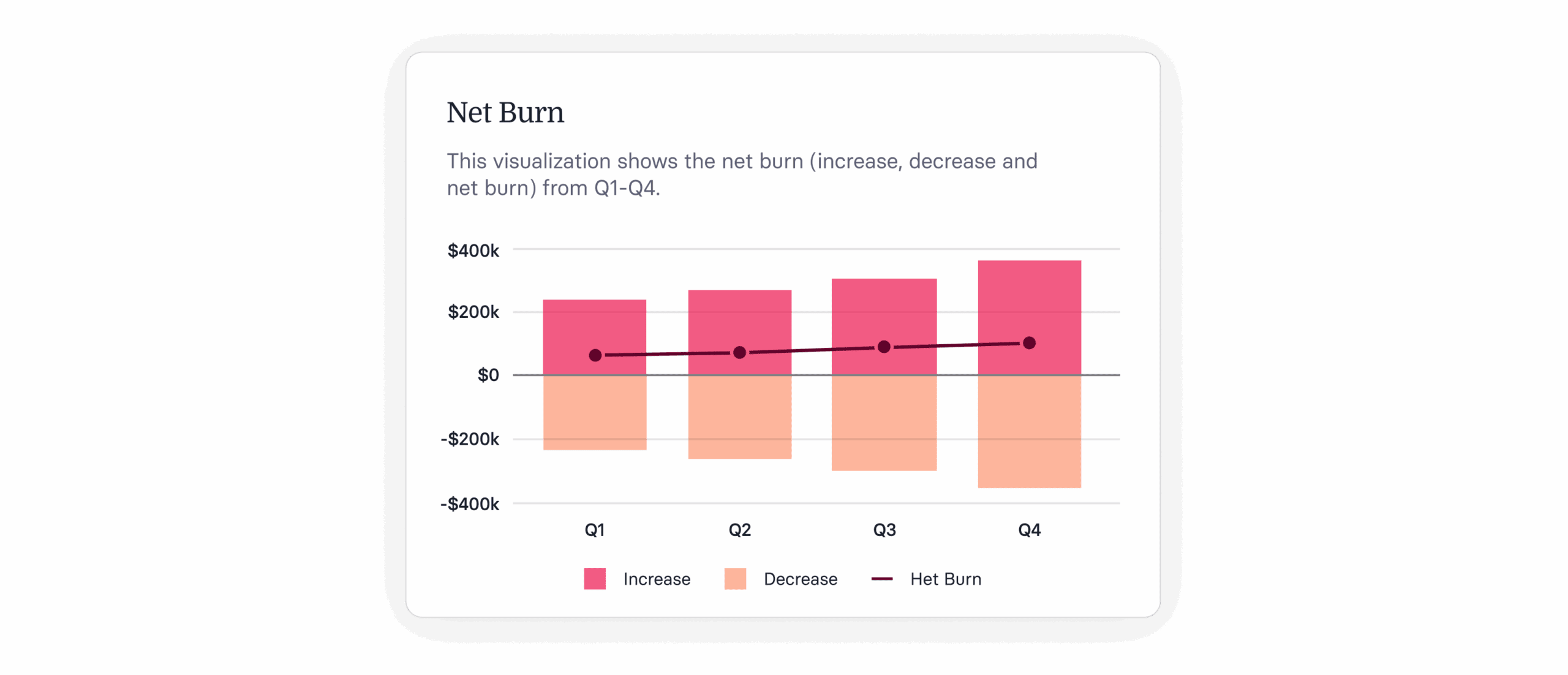Days payable outstanding (DPO) is a metric that tracks the average number of days a company takes to pay its bills and invoices.
What are days payable outstanding?
At a high level, it reflects how efficiently a company manages its accounts payable processes.
The standard way to calculate DPO is to divide accounts payable for a given period by the cost of goods sold (COGS)—or cost of revenue, in the case of SaaS companies. Multiply that result by the number of days in the period (monthly, quarterly, or yearly) to get your DPO.
<<Download the SaaS metrics cheat sheet today!>>

How to calculate days payable outstanding: two methods
Days payable outstanding (DPO) measures the average time it takes a company to pay its outstanding bills. Below are two common ways to calculate DPO. The first method is typically used by companies that sell physical goods, while the second is better suited for SaaS or service-based businesses.
The classic method
To calculate DPO, divide the total accounts payable for a specific period (on a monthly, quarterly, or annual basis) by the cost of goods sold. Then, multiply this result by the number of days in the period.
Here’s the formula for this method of DPO calculation:

Accounts payable reflects what a company owes to vendors or service providers for goods or services already received. It’s the total of short-term liabilities listed on the company’s balance sheet. AP aging reports can help organize and provide visibility into these obligations.
In a SaaS business, cost of goods sold (COGS) typically appears as cost of revenue. This includes expenses tied to delivering your service—like cloud hosting (e.g., Amazon Web Services), customer support, training, software subscriptions, and web development. These are often indirect costs but still essential for maintaining or improving the product.
The “number of days” refers to the time frame used in the calculation. For example, Q4 includes October, November, and December—a total of 92 days.
Example of DPO calculation using this method
To illustrate this calculation with an example, let’s consider a software provider. The company is calculating its DPO for the first quarter of 2024, spanning from January to March, totaling 90 days. During this period of time, the accounts payable to vendors and other service providers add up to $150,000.
Cost of revenue for the same period, which includes server costs, software licensing fees, and customer support, amounts to $300,000.
Here’s how you’d calculate DPO for Q1 2024:
- DPO = ($150,000 / $300,000) x 90 days = 45 days
On average, the company takes 45 days to pay its outstanding invoices and bills. This metric is crucial in assessing the company’s efficiency in managing cash flow and vendor relationships.
The more SaaS-friendly method
To calculate DPO, start by finding your accounts payable (AP) turnover. Add the beginning and ending AP balances for the period and divide by two. Then, divide the total value of purchases made on credit during that time by the average AP balance. Finally, divide 365 by this result to get your DPO.
Here’s the formula for this DPO calculation method:


Start by selecting the time period you want to analyze—whether it’s a quarter, a year, or another timeframe. Then, calculate the total value of vendor purchases made on credit during that period. Be sure to exclude any purchases made with cash. You’ll also need the accounts payable balances at both the beginning and end of the period to complete the calculation.
Example of DPO calculation using this method
To illustrate this calculation method with an example, let’s again consider a software provider calculating DPO over the same time period: the first quarter of 2024, spanning from January to March, totaling 90 days. The total number of purchases on credit in this period amounts to $750,000. The beginning AP balance in this period was $100,000 and the ending balance was $200,0000.
Here’s how you’d calculate DPO for Q1 2024:
- AP Turnover = $750,000 / [($100,000 + $200,000) /2] = 5
DPO = 73
On average, this company takes 73 days to pay its outstanding invoices and bills.
Interpreting your DPO
There’s no one-size-fits-all number for an ideal DPO. The right benchmark depends on several factors, including industry norms and broader market conditions.
That said, DPO is a key indicator of how well a company manages its cash flow. A higher DPO can be a sign of strong cash retention, giving the business more flexibility to invest in other areas. But if payments are delayed too long, it could strain relationships with vendors.
Finding the right balance between cash inflows and outflows is especially important in SaaS accounting, where long-term success depends on both financial efficiency and operational trust.
Importance of DPO for B2B SaaS startups
While DPO tracks how long it takes a company to pay its bills, the insights it provides go far beyond a simple number—especially for B2B SaaS companies. At its core, DPO helps you assess how efficiently your business manages cash. When you understand this metric, you can better align incoming revenue with outgoing payments, supporting long-term financial health.
That’s where strategic accounts payable (AP) comes in. It’s not just about operational efficiency—it’s about making smarter decisions around spend. A thoughtful approach to DPO includes monitoring compliance with vendor terms, identifying unnecessary expenses, and evaluating vendor ROI to ensure your deals remain cost-effective.
In this context, DPO becomes more than a metric. It becomes a tool for optimizing resources and supporting sustainable growth.
Key takeaways
- Days payable outstanding (DPO) is a key metric that measures the average time a company takes to settle its bills and invoices
- Calculating DPO involves dividing accounts payable by the cost of goods sold and multiplying the result by the number of days in the period
- A higher DPO can indicate strong cash flow management, allowing companies to retain cash longer for operational and growth needs
- For B2B SaaS startups, DPO provides insights into cash management efficiency and helps align revenue inflow with payment outflow
- Regularly reviewing and optimizing DPO can lead to favorable credit terms, improved vendor relationships, and enhanced financial stability
Comparing DPO with other cash flow metrics
In today’s market, SaaS companies have shifted from a “grow at all costs” mindset to a more intentional focus on growing efficiently. That shift has made DPO more important than ever.
When used alongside other key cash flow and expense metrics, DPO becomes a powerful tool for understanding spend and identifying opportunities for improvement.
While tracking these metrics manually can be time-consuming, financial software tools can help streamline the process—making it easier to measure, analyze, and act on your data with confidence.
Get the 10 SaaS metrics you didn’t know you needed
Day sales outstanding
Days sales outstanding (DSO) measures the average time to collect payments after a sale, helping businesses assess their cash conversion efficiency and manage receivables.

Together with DPO, which focuses on bill payments, DSO provides a comprehensive view of a company’s cash flow health. For SaaS companies, analyzing both DSO and DPO is essential for understanding cash flow efficiency and making strategic financial decisions.
Cash flow from operating activities
Also known as operating cash flow (OCF), cash flow from operating activities shows the cash generated from regular business operations. This metric helps finance teams understand the company’s capacity to generate enough positive cash flow to maintain and grow operations.
Together with DPO, these metrics provide deeper insight into a SaaS company’s financial health. In other words, they reveal the crucial balance between generating sufficient operational cash, as indicated by OCF, and the effective management of liabilities, reflected in DPO — this equilibrium is vital in sustaining operations and supporting growth.
Net nurn
Net burn, also known as burn rate, measures the rate at which a company spends its capital to finance overhead before generating positive cash flow from operations. This metric is particularly relevant to B2B SaaS startups in the expansion stage.

When analyzed with DPO, a SaaS company’s burn rate—a measure of capital expenditure speed—sheds light on cash flow management. A high burn rate and low DPO might indicate cash flow issues due to rapid spending and faster payables clearance. In contrast, a balanced approach suggests effective financial management, marking the company’s stability and growth.
Free cash flow
Free cash flow (FCF) is a company’s cash after accounting for all the costs associated with operations and maintaining capital assets. This metric is essential in understanding the cash available for expansion, dividends, or debt repayment.
When analyzed with DPO, FCF helps assess overall cash management efficiency. For a SaaS company, a healthy FCF and a strategically managed DPO can signal strong operational efficiency, indicating its ability to invest in growth while effectively managing its short-term liabilities.
Practical DPO tips for B2B SaaS startups
While it’s clear that maintaining a healthy DPO is essential, tracking and optimizing the metric accurately is easier with an automated finance platform like on your side, unlike Excel.
Negotiate favorable payment terms with suppliers
Extending the time allowed to pay vendors or suppliers can increase a company’s DPO, helping it hold onto cash longer and improve overall liquidity.
That extra time can make a real difference—giving the business more breathing room to manage day-to-day expenses, invest in growth, or maintain a buffer for unexpected costs. In short, longer payment terms can offer valuable financial flexibility and help optimize your broader cash management strategy.
Leverage early payment discounts
Taking advantage of early payment discounts from suppliers can help reduce overall costs. While this may shorten your DPO, the savings often outweigh the benefits of holding onto cash a bit longer.
This approach can be especially effective for SaaS companies, where building strong vendor relationships and managing operational costs are essential to long-term success.
Regular review and analysis
It’s important to review your DPO regularly to make sure it aligns with your cash flow strategy and day-to-day operational needs. Frequent check-ins can help you spot trends, assess the impact of changes in payment timing, and identify areas for improvement.
By consistently analyzing these insights, you can make informed decisions—like adjusting supplier terms or fine-tuning payment schedules—to maintain a healthy balance between strong liquidity and positive vendor relationships.
Maintain healthy vendor relationships
Strong vendor relationships can lead to more favorable terms—like extended payment deadlines or added flexibility during cash flow crunches. This often results in a longer DPO, giving the company more time to hold onto cash without straining supplier partnerships.
As in any industry, maintaining positive relationships also strengthens your negotiation position. That can mean cost savings, better service, or preferential treatment—all of which can make a meaningful impact when you’re focused on optimizing profit, not just revenue.
DPO propels SaaS startup growth
For B2B SaaS startups, mastering DPO isn’t just a financial task—it’s a strategic lever for sustainable growth.
By optimizing DPO, companies can improve cash flow, manage operational spend more effectively, and reinvest in key initiatives. That’s why it’s essential to track this metric regularly and use it to guide smart, forward-looking decisions.
A consistent focus on DPO can help unlock better vendor terms, strengthen supplier relationships, and build a more resilient financial foundation. For startups looking to scale with intention, DPO should be a core part of financial planning and analysis.
Days payable outstanding FAQs
How is DPO different from Days Sales Outstanding (DSO)?
While both are key indicators of cash flow health, days payable outstanding (DPO) and days sales outstanding (DSO) measure different sides of the equation.
DPO looks at how long it takes a company to pay its vendors—offering insight into how well it manages outgoing payments. DSO, on the other hand, tracks how quickly the company collects payments from customers after a sale, reflecting the efficiency of receivables collection.
In short: DPO is about money going out, while DSO focuses on money coming in.
Recommended For Further Reading
Why is DPO especially important for B2B SaaS startups?
DPO is crucial for B2B SaaS startups as it helps with cash flow management. For instance, a high DPO allows companies to hold on to cash longer, which helps cover operational costs, growth, and other short-term investments — especially needed during early, cash-intensive stages.
Are there any external factors that might influence a company’s DPO?
Yes, several external factors can cause a company’s DPO to fluctuate. For instance, market conditions, supplier policies, industry standards, interest rates, and even the regulatory environment can impact payment timelines and practices — ultimately affecting DPO.
